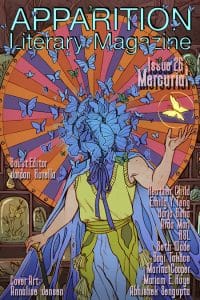 Submitting your work can be overwhelming. Along with writing a polished story, writers need to consider both context and content before submitting to a literary magazine. Context determines whether your story is appropriate for the magazine. If you’re submitting a hard-boiled crime story to a fantasy magazine, it’s likely that your story doesn’t match the context of the magazine. In this case, content means the formatting of the story.
Submitting your work can be overwhelming. Along with writing a polished story, writers need to consider both context and content before submitting to a literary magazine. Context determines whether your story is appropriate for the magazine. If you’re submitting a hard-boiled crime story to a fantasy magazine, it’s likely that your story doesn’t match the context of the magazine. In this case, content means the formatting of the story.
Most literary magazines (including Apparition Lit!) require stories be formatted using the Shunn manuscript format. Although there may be variations, it’s recommended that writer’s draft their stories with this format in mind.
Writers always have preferences on how they write their drafts. To save time, it may help to train yourself to use the same document format each time. Better yet, set up a document template that contains:
- Double-line spacing
- Indented first lines
- Section breaks denoted with #
By relying on a document template, formatting elements like font choice, bolding, and italics can quickly be changed. While the Shunn manuscript is shown with Courier New font, writers should use whatever font is the most readable. Following a set format while drafting, saves time and energy for later edits.
Always re-read the submission guidelines before submitting. There may be further requirements about including the author name and address. If you’re ever concerned about how to address a cover letter, no one ever went wrong with an ol’ fashioned “Dear Editors”. Context and content should always be considered when submitting your work. Focus should always be on finding the perfect submission call for your story, not painstakingly reformatting with every new magazine.
Featured image by Pexels





